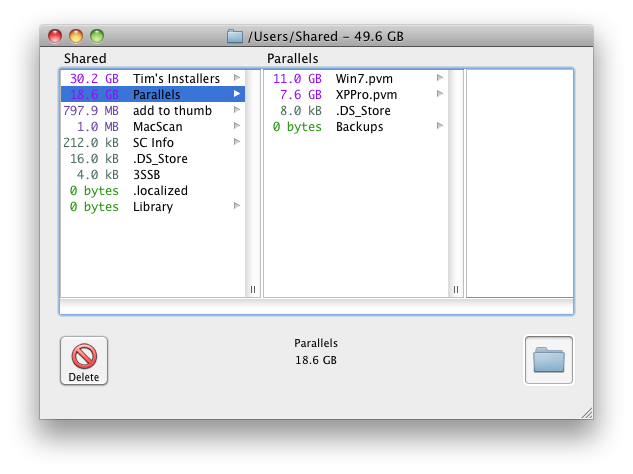
- #RUN OMNIDISKSWEEPER AS ROOT HOW TO#
- #RUN OMNIDISKSWEEPER AS ROOT INSTALL#
- #RUN OMNIDISKSWEEPER AS ROOT SOFTWARE#
#RUN OMNIDISKSWEEPER AS ROOT SOFTWARE#
Add them after any software installations you need to run as root: In practical terms, this means adding two lines to your Dockerfile (or Containerfile if you’re not using the Docker toolchain to build container images). The first mitigation technique is to add a non-privileged user and set it as the process owner. READ DOCUMENTATION Add a non-privileged user and set it as the process owner Unless you explicitly add a non-privileged user, the containerized software will continue to be set to keep running as root. So container build systems set you up, by default, with the root user. Installing software is something only the root user can do.
#RUN OMNIDISKSWEEPER AS ROOT INSTALL#
When software is packaged into a container image, you typically have to install some supporting software first. The problem with running as root, starts with how the container is first built. And you’ll be the owner of those resources that are used for the attack. They could also perhaps start new servers in your cloud account, racking up huge costs and use it as a platform to launch new attacks against other targets. So a hacker can not just read all kinds of information, like database connection credentials, and steal all that data. In many cloud environments, that also means access to cloud credentials. This includes all information from all other containers running there, and all kinds of files on the harddrive.

The problem is that with unrestricted root access to the host or Kubernetes node, a hacker that breaks out of the container’s isolation can view all kinds of secret information. What can happen if you run containers as root on Kubernetes? The problem is that hackers are actively figuring out ways to break this isolation between containers and the rest of the host or Kubernetes node. The idea is that cgroups will isolate containers so well that processes running in containers and cgroups will not be able to interact with each other or other processes on the same host.

True to their name, containers add some isolation between processes. Containers run on a host, or in Kubernetes words, on a node. When one starts a container, the software within is started as a process that is isolated via a Linux feature called cgroups. A running piece of software is called a process. What is the problem with running containers as root?Ĭontainers are a way to package and run software. But if the root user starts the same software, the software has the root user’s super powers. If it tries to read files it does not explicitly have permissions to, it will fail. So if a normal (“non-privileged”) user starts a piece of software, it will be limited in what it can do. Software started by a user has the same permissions as the user that started it. So the root user can read all files, install new software, open any network connection it wants… you name it. This user is special in Linux systems, because it has all permissions needed to administer a system. Running a container as root means that the software packaged in a container is set to start as the root, or system administrator, user. Because very little actually needs all of them. And what to do if you have specialized software that for some reason still needs some root-like capabilities.
#RUN OMNIDISKSWEEPER AS ROOT HOW TO#
In the remainder of this article, we show how to stop running containers as root. It’s a security nightmare, and you can read why in the next section.

The latest such bug is CVE-2022-0492 ( Palo Alto Network’s writeup here), but we also had CVE-2022-0185 ( Aqua Security’s writeup here) earlier this year. Hackers find new ways of escaping out of the container, and that grants unfettered access to the host or Kubernetes node. Running containers as root is a bad idea for security.


 0 kommentar(er)
0 kommentar(er)
